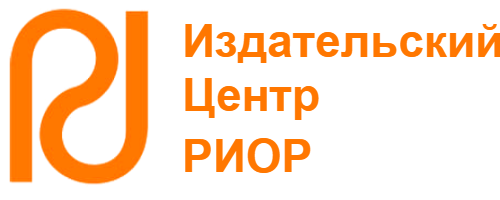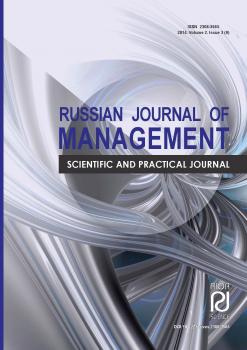Alternativity in innovative projecting
Alternativity in innovative projecting
1. Concepts of alternativity
In our previous publications [1-3] we examined network models of planning, scheduling and control related to projects with fixed, deterministic structure. The latter circumstance meant the necessity of carrying out the entire set of activities entering the network; otherwise, the project would never be regarded accomplished. The random properties of the project revealed themselves explicitly by indeterminate durations of particular activities entering the project. As a matter of fact, activity duration indeterminacy causes usually random cost values and expenses,which are dedicated mainly to describing "time-cost"-type models for various hierarchical levels of the projects' control system. The fixed structure of the latter eliminates, thus, every aspect of structural alternativity, which is being met in ever increasing amounts in modern innovative projects.
The concept of network models' alternativity implies that not all activities prematurely enlisted in the project would be necessarily carried out within its implementation. Specifically, in alternative network models (ANM) not all activities emitting from certain events (call them further on alternative events) would be carried out, but only part of them. Furthermore, the very concept of alternativity in network models is being split into two sub-groups, the first one comprising models of alternative deterministic type and the second one - of alternative stochastic type. Alternative deterministic models comprise events emitting sets of several activities (two or more) while the exact choice of activities from each set to be processed occurs without random considerations on the basis of algorithmic relationships. If, on the contrary, the choice of processed activities is of random nature itself (for instance, is carried out by preliminary setting realization probabilities comprising a full group of events), the network model is considered to be of alternative stochastic type.
In any case, the presence of alternativity causes the project's implementation process to be of branching nature and, in fact, refers to multi-variant outcome type processes. It can be well-recognized that considering ANM does not contradict the possibility of indeterminate probabilistic durations for particular activities entering the network. Thus, additionally introducing the alternativity concept into network models, although necessary to adequately represent modern innovative projecting enterprises, causes for significantly increasing the complexity and difficulties related to corresponding mathematical techniques to optimize planning, scheduling and control models of such project management systems.
When analyzing various alternative network planning models [1-4], the general conclusion may be drawn that the complexity of examining and optimizing those models depends to a high extent on:
1) the specific amount of alternative nodes as part of the total volume of nodes entering the network model;
2) the specific ratio between deterministic alternative and stochastic alternative nodes;
3) the "penetration depth" of deterministic alternative nodes into the process of carrying out the project. The more of such nodes "penetrate" the project from its beginning to the very end, the more difficult it becomes to control such a project;
4) the presence of combined deterministic alternative and stochastic alternative nodes, when a particular event node emits two different by nature bunches of alternative activities. Such nodes when present require the highest level of mathematics and control theory techniques to adequately control the project.
2. Main problems solved in alternative projects
Although not easy in usage, ANM become nowadays extremely efficient in innovative projecting. In this course, two main problems can be singled out, namely:
A. Monitoring highly complicated innovative R&D projects comprising all kinds of outlined above alternative nodes. To solve the problem one has to:
1. Single out all sub-sets of non-contradictive deterministic alternative nodes together with chosen directions of leaving each node. Two alternative nodes are regarded contradictive if the probability of reaching one of them by leaving the other one equals zero.
2. Take a lookover of each sub-set to obtain the optimal solution by considering the given objective and restrictions.
B. Monitoring long-term target-oriented innovation programs where alternative stochastic network models can be determined and optimized within the period of the project's realization (e.g., transcontinental pipelines, developing oil/gas fields, creating new innovative industrial areas, etc.). Practically all ANM techniques that can be utilized for solving the regarded problem comprise two basic concepts:
· deterministic alternative scenarios (fragments) which describe different ways to reach the desired target, and
· a stochastic system (usually a purely stochastic alternative network) with multi-variant outcomes of random nature.
Such a stochastic system is fully determined by the chosen scenario and usually follows the latter. Moreover, such combinations of a group of alternative scenarios each of them to be linked with a stochastic system may arise several times within the progress of the innovation program, e.g., within the development of a new innovative industrial area [5-6].
The methodology of controlling long-term innovation programs on the basis of the concepts outlined above, as suggested in the presented monograph, boils down to the following. In the process of carrying out the program in consecutive discrete time moments there appears the necessity of choosing a particular variant of future program development from a number of alternative competing variants. It goes without saying that all alternative variants correspond to global targets of the innovation program. For all sub-systems comprising:
a deterministic alternative fragment an alternative network model corresponding to that fragment
comparative analysis is carried out by means of a game theory model whose utility value is taken equal the utility of the overall target-oriented program. The fragment which appears to be the winner is the one to be carried out, and the process of the program's implementation proceeds until the next alternative event which calls anew for the need to determine a particular system's direction to the target.
Such a methodology has been successfully applied [5-6] in the process of implementing innovation target-oriented programs related to the development of vast economic areas.
3. Alternative concepts in modern innovative programs
The alternatives outlined above have probabilistic nature, which causes the corresponding design variants to be regarded stochastic ones. Design processes of complicated systems comprising problematic operations of probabilistic nature, may be represented by stochastic programs [1-6]. By applying the term "program" we will further understand a sequence of actions aimed at creating a complicated system which complies with the following requirements:
- the sequence of actions is bounded with a common idea and target, subordinated to a single scientific and technological concept;
- the sequence assumes an expanded technical and economical assessment of the expediency of its implementation
- requires joint efforts of multiple performers;
- is characterized by multi-variant structure and significant indeterminacy as to particular paths of its implementation.
When controlling such programs new optimization problems appear, originating from the necessity to account for the possibility and probability of taking (at certain stages of the complicated system's development) alternative decisions. Each of such decisions determines a unique variant of achieving the final target or the next intermediate target together with its inherent set of activities, composition and corresponding estimates of particular activities. While forecasting and planning a stochastic program one should determine all possible variants of its implementation, assess their parameters (duration, required resources) and practical possibility of carrying out (probability). By comparing variant parameters it becomes possible to determine the best (for example, in terms of an economical objective) ways of promoting the program.
On the stage of on-line control of a stochastic program control actions are quite restricted and boil down to providing (if possible) the most favorable conditions, i.e., improving the probability of implementing the optimal variant or those being close to it. Besides, while periodically updating the program whilst its implementation one should utilize to the maximal extent available information regarding similar (in terms of technical and technological concepts) programs, which might reduce the number of stochastic events. Yet, multi-variant processes of developing complicated systems under uncertainty are by no means restricted to the presence of purely stochastic alternative outcomes only. A quite representative group of such processes comprises branching nodes generating not only stochastic alternative (uncontrolled) variants but also the so-called deterministic alternative variants. The latter enable considering decision making as to choosing a particular path of developing the program (from a list of competing paths) as part of the control procedure. In most cases, deterministic variants of program development are based on familiar or practically approved scientific and technical concepts and, thus, do not depend usually on future events and situations. Optimization problems to control such mixed programs comprising both deterministic and stochastic variants, boil down at the forecasting and planning stage to determining all possible variants, their examining in the context of the program's development taking into account interrelations between deterministic and stochastic situations of generating alternative paths, as well as determining contents and parameters of controlled "bunches of variants".
At the on-line control stage mixed programs enable much greater than in a purely stochastic process, possibilities to carry out control actions, which boil down to decision making upon choosing a variant in deterministic events. A multi-variant program becomes fully controlled in the particular case when it comprises deterministic branching events only. Here the possibility of choosing a specific path of reaching the target appears already at the planning stage; the chosen path is the most efficient one, and it comprises the accepted variant which is fully determined both in composition and in structure of the activities entering it. This situation takes usually place when the program comprises a relatively small amount of competing variants. For extended programs comprising significant amounts of branching points, the total number of alternative paths to reach the target might become enormous. This circumstance complicates substantially the analysis of each of the paths to subsequently choose the optimal one. In this case efficient results might be obtained by successive decision making about choosing a particular deterministic competing variant upon reaching alternative branching points at the on-line control stage. It can be well-recognized that the considered problem has much in common with the outlined in [3-5] project scheduling problems applicable to single and small-series manufacturing. To conclude the survey of the outlined above multi-variant programs of developing complicated systems, let us point out the main groups of the considered control subjects:
1. Scientific research and innovative design, aimed at the solution of pioneering frontline problems of scientific progress, which are characterized by the highest level of uncertainty. The latter usually assume carrying out works on parallel directions, based on competing alternative scientific and technological principles, repeated tests and sometimes even repetition of extended program stages should the previously chosen direction appear to be inefficient, etc.Those programs are mostly mixed ones and comprise both stochastic and deterministic branching [1-5].
2. Scientific research referring to purely stochastic multi-variant programs [1-5]. The latter usually comprise non-controllable alternative network models.
3. Major capital investments programs on new production and technology development, as well as establishing and developing large-scale industrial areas [5-6]. Such control patterns refer usually to deterministic and mixed type multi-variant programs.
CONCLUSIONS
We overview various planning, control and scheduling network models with permanently changing structure, usually of alternative stochastic type with multi-variant outcomes and different targets. For that class of projects on-line control usually cannot be implemented. Control actions mostly deal with situations when an alternative milestone event is executed.
The paper's backbones include:
· two controlled alternative network models (ANM) of mixed type, comprising both deterministic and stochastic branching nodes, and
· models of long-term target oriented innovation programs of inherent alternative nature.
1. Golenko (Ginzburg), D.I. (1972),Statistische Methoden der Netzplantecknik, Leipzig: BSB B.G. Teubner Verlagsgesellschaft (in German, translated from Russian:Statistical Methods in Network Planning and Control,Moscow: Nauka, 1968).
2. Golenko (Ginzburg), D.I. (1973), Statistical Models in Production Control,Moscow: Statistika (in Russian).
3. Golenko (Ginzburg), D.I., Livshitz, S.E. and Kesler, S.Sh. (1976), Statistical Modeling in R&D Projecting,Leningrad: Leningrad University Press (in Russian).
4. Golenko-Ginzburg, D. (2014), Stochastic Network Models in Innovative Projecting, Vol. 1: Network Models with Deterministic Structure, Yelm, WA: Science Book Publishing House.
5. Golenko-Ginzburg, D. and Gonik, A. (2015), Stochastic Network Modelsin Innovative Projecting, Vol. 2: Alternative Stochastic Network Projects, Yelm, WA (USA): Science Book Publishing House.
6. Krasovski, V.P. (1974, ed.), Long-Term Capital Investments, Moscow: Ekonomika (in Russian).














